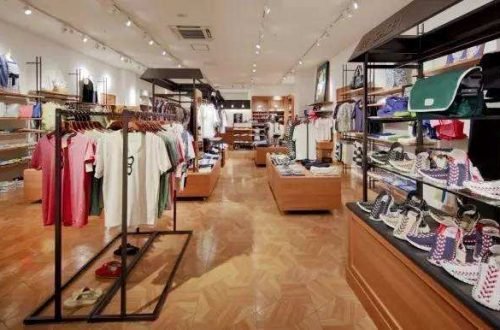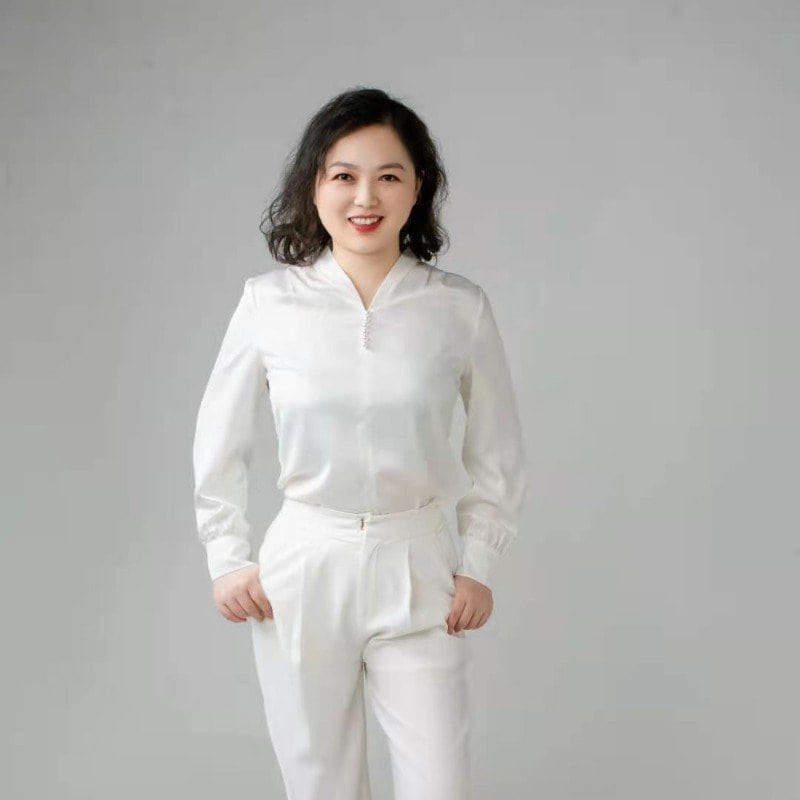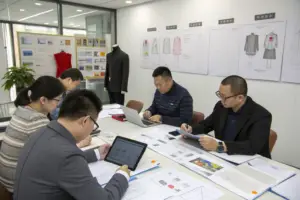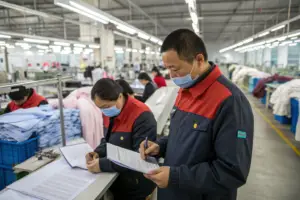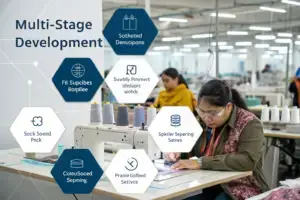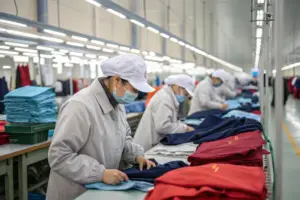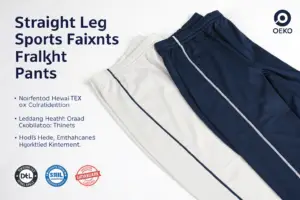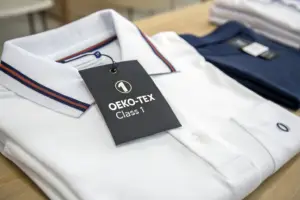An ideal supply chain synergy scenario in the garment industry
- The ideal supply chain is one that ensures that products are not out of stock while maintaining the lowest inventory. To be able to achieve low inventory, it is necessary to shorten its cycle. Now, shortening the supply chain cycle through supply chain collaboration is essentially about information exchange and risk-sharing. Consider this scenario:
- Let’s take fashion STYLE A as an example. The sales department makes the quarterly sales forecast of fashion STYLE A and prepares goods for the first order based on 20% of the expected sales volume;
What problems can apparel supply chain collaboration solve?
Actually, it is my belief that shortening the supply chain cycle through garment supply chain coordination is essentially changing the stocking belonging initially to the terminal into a small part of the stocking of the terminal, the fabric and accessories of garment manufacturers, and the raw materials of garment fabric and accessories manufacturers. The clothing supply chain cycle is long because there are many links. For example, when I make pure cotton T-shirts, the whole garment production process takes about 60 days. This period covers everything from cotton picking, cotton spinning, weaving, dyeing, finishing, cutting (embroidery/printing), garment factory sewing, and finally to finishing and packaging. Only cutting (embroidery/printing), garment factory sewing, post-finishing, and packing are required, provided the garment manufacturer has the materials ready. This stage typically takes 10 to 15 days but can be completed in 3 to 7 days if accelerated, thereby significantly reducing the time cycle of clothing production.
The inventory of the clothing terminal is prepared according to the predetermined sales plan. Once the sales volume of the burst items exceeds the expectation, it is easy to run out of goods. Under normal circumstances, the cycle of reordering in the clothing supply chain is more than a month. Once the replenishment window is missed, the reordering will easily become a backlog of inventory. So a lot of times, the terminal will choose to end up selling out of the model, and instead try to sell a backlog of models that are not selling well.
These below reflect the advantages of apparel supply chain synergy:
- Since clothing manufacturers have prepared materials, the production cycle is much shorter, and it is easy to keep up with the sales rhythm of popular styles;
- As a result of information sharing, on the day the product sales start to rise significantly, clothing manufacturers and those for fabrics and accessories will start synchronized production and prepare to increase the corresponding quantity of materials.
For example, the sales volume of the STYLE B designed by the customer this year was expected to be 25,000 pieces, but the final sales volume was 37,228 by July 10. Nevertheless, we have never been out of stock for the entire quarter. In the second week after the launch of STYLE B, the actual sales volume began to exceed the planned sales volume. However, the sales volume exceeded only 10% at the beginning, so just 2,500 pieces needed to be added to the first order. Likewise, when follow-up sales continue to rise, the sales plan changes, and there will also be a synchronization of double orders.
What are the obstacles and problems to realizing the ideal supply chain synergy scenario? How can they be solved?
- In many cases, sales data are a secret of a clothing brand. Is the terminal willing to give the data to garment supply chain enterprises? How can it be ensured that the clothing sales data will only flow through the supply chain and not leak out? I would like to ask my friends in sales, are you willing to share the data with the clothing suppliers? It is difficult for general merchants to give clothing sales data to clothing suppliers, which requires complete trust from both sides. Because the clothing market reacts too quickly, it will be crucial for both the clothing manufacturers and salespoints once the information is leaked. In reality, clothing suppliers need two types of sales data. The first is the accurate sales information of clothing sellers to each SKU every day. The second is real-time inventory data from clothing sellers. Usually, unfamiliar clothing suppliers don’t like such complicated things. Here are a few questions for you to consider: Question 1: As a clothing seller, are you willing to provide accurate sales data and real-time inventory data to clothing suppliers? Under what circumstances would a business be willing to give such data to a vendor? Would there be conditions? Question 2: The core of a clothing manufacturer’s material preparation is the risk transfer of the terminal. In case of a sudden decline in sales, clothing manufacturers are ready to stock large quantities of fabrics and accessories. Similarly, upstream clothing fabric and accessories manufacturers also have corresponding risks. Why are clothing manufacturers willing to take that risk? How can this risk be reduced?
Under what circumstances are you willing to prepare materials for your clients? Here are some considerations:
- The customer needs to provide real-time clothing sales data and warehouse inventory, as well as the expected quarterly sales plan that is updated with the real-time sales data;
- In case the sales volume is far less than the sales plan, clothing sellers and clothing factories will try their best to develop other styles according to the raw material to promote sales;
- If no other styles can be reasonably sold, the clothing factory will sell the products to the sellers at cost price, and the clothing sellers will sell the products through discount and low-price promotions.
There is indeed a big difference between the initial sales expectation and the actual final sales. For example, let’s say the initial sales of STYLE A are 20,000 pieces, STYLE B is 2,500 pieces, and STYLE C is 1,500 pieces. Because of the assumption that the supply chain cycle is short enough, the customer’s planned sales volume can be as conservative as possible.
Question 3: Frequent and small orders but repeated will cause a certain degree of increase in cost and loss. How can inventory risk be avoided while not increasing the cost considerably?
Truth be told, the basic low value of the goods does not actually need the frequency of quick orders. This clothing style inventory risk is low, and the added value is not high. The energy spent to receive goods is not significant. It is the same as the original question about multiple orders — cost-efficiency is not necessarily high. However, for the design model, the product’s added value is high. The increased logistics cost and management costs actually account for a very low proportion in front of the increased sales volume. Secondly, once the design is unsalable, it is challenging to dispose of, so the inventory needs to be as small as possible.

